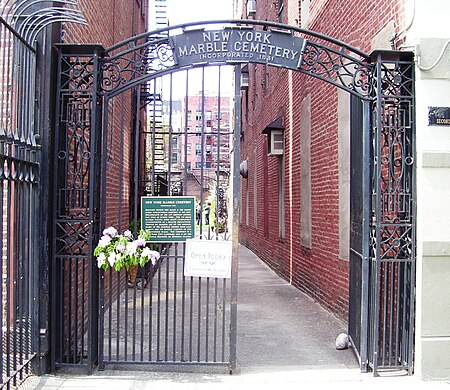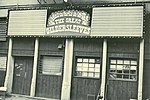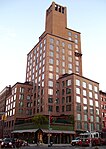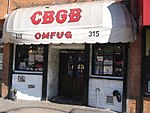New York Marble Cemetery

The New York Marble Cemetery is a burial ground established in 1830 in what is now the East Village of Manhattan. It occupies the interior of the block bounded by 2nd Street, Second Avenue, 3rd Street, and the Bowery. It is entered through an alleyway with an iron gate at each end, located between 41 and 43 Second Avenue. About 2,100 burials are recorded in the cemetery's written registers, most from prominent professional and merchant families in New York City.The New York Marble Cemetery, which was New York City's first non-sectarian burial place, should not be confused with the nearby New York City Marble Cemetery one block east, which is entirely separate, and was established one year later. Both cemeteries were designated New York City landmarks in 1969, and in 1980 both were added to the National Register of Historic Places.
Excerpt from the Wikipedia article New York Marble Cemetery (License: CC BY-SA 3.0, Authors, Images).New York Marble Cemetery
East 2nd Street, New York Manhattan
Geographical coordinates (GPS) Address Website Nearby Places Show on map
Geographical coordinates (GPS)
| Latitude | Longitude |
|---|---|
| N 40.725625 ° | E -73.990972222222 ° |
Address
Albert's Garden
East 2nd Street
10012 New York, Manhattan
New York, United States
Open on Google Maps






